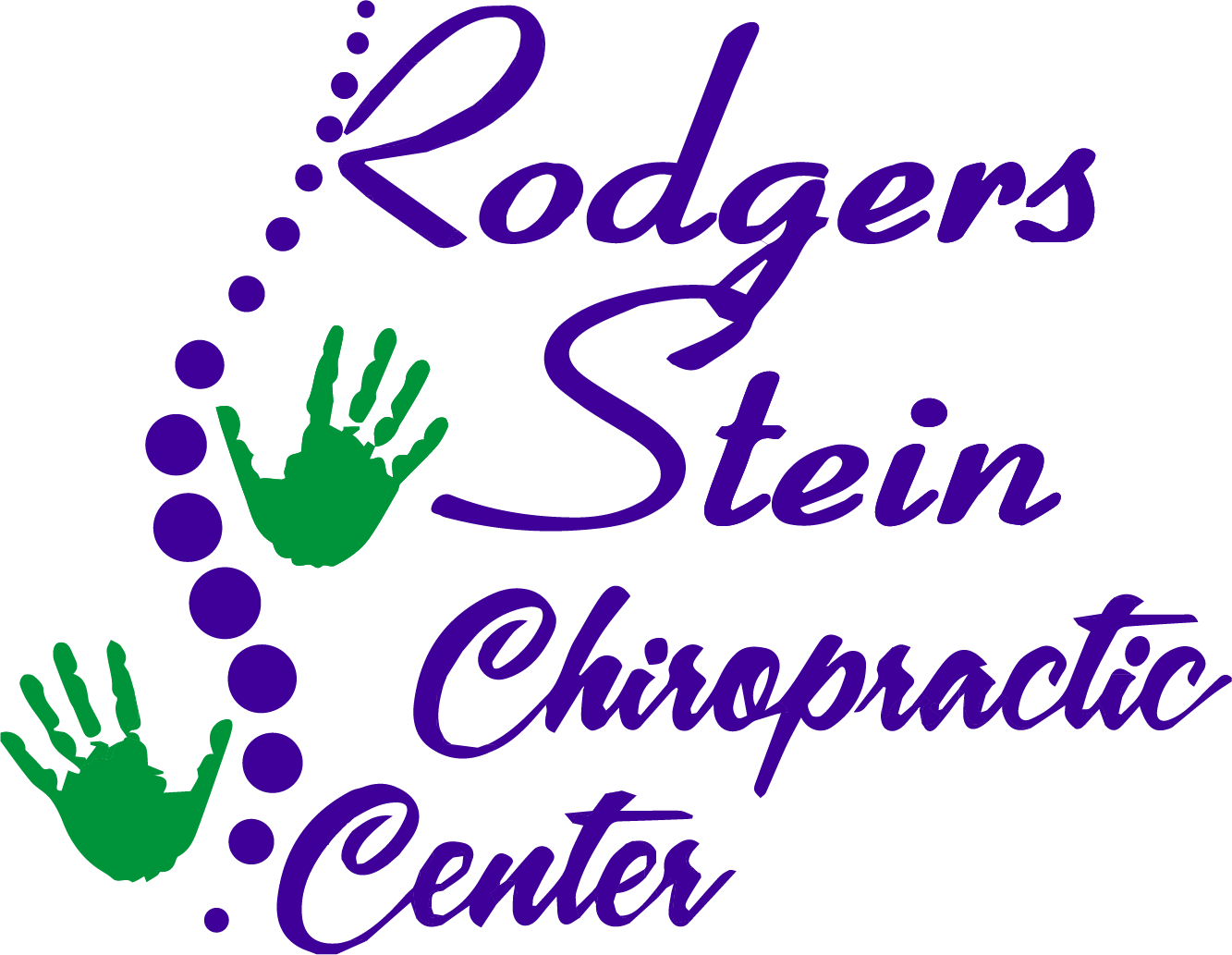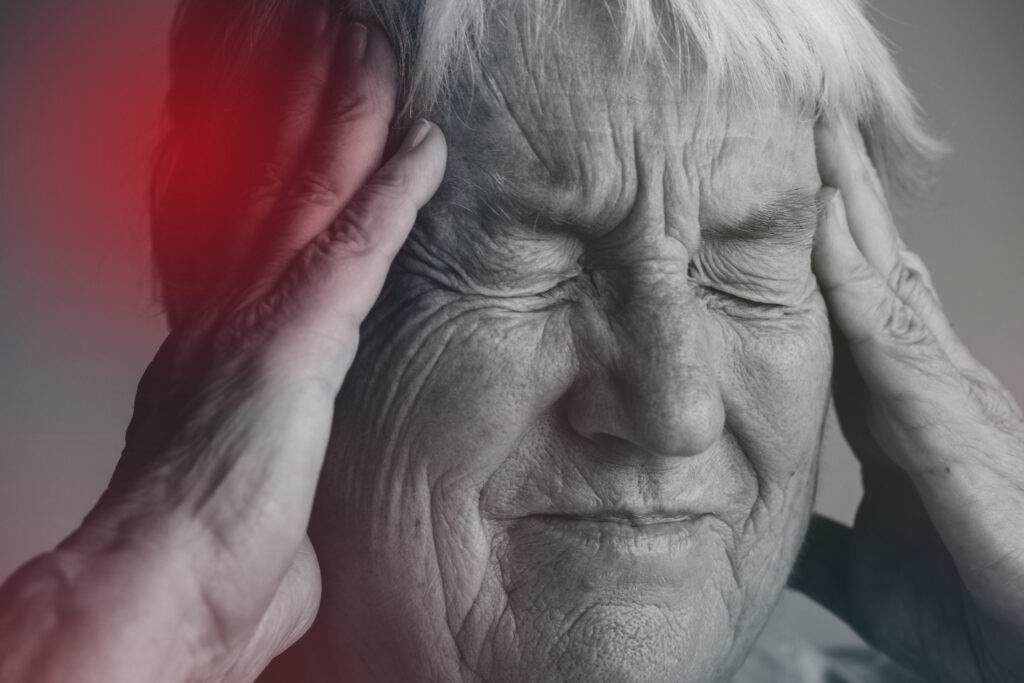If you're living with arthritis pain, you might be interested in exploring alternative therapies that can complement your current treatment plan. Approaches like acupuncture and specific herbal remedies have gained attention for their potential benefits, offering a different route to relief that sidesteps some of the side effects associated with conventional medications. By considering these options, you may find yourself not only managing your pain more effectively but also enhancing your overall well-being. What if the key to your improved mobility and comfort lies in these holistic practices?
Understanding Arthritis Pain
When it comes to arthritis pain, understanding its origins can help you manage it better. Arthritis isn't just a single condition; it encompasses over 100 types, including osteoarthritis and rheumatoid arthritis. Each type has distinct causes and symptoms, affecting your joints in different ways.
Osteoarthritis, for instance, results from wear and tear on the cartilage, while rheumatoid arthritis stems from an autoimmune response where your body's immune system mistakenly attacks your joints.
Recognizing the source of your pain is vital. You might feel stiffness, swelling, or tenderness in affected areas. This inflammation occurs because your immune system sees the affected joints as harmful, leading to discomfort. Understanding this process can help you make informed decisions about your care.
It's also essential to reflect on the role of lifestyle factors. Obesity, for example, can exacerbate your arthritis pain by putting additional stress on your joints. Regular exercise can help maintain joint function and reduce stiffness. Even gentle activities like walking or swimming can make a significant difference.
Lastly, don't overlook the importance of proper nutrition. Certain foods can trigger inflammation, while others can support joint health. Paying attention to your diet can be a key step in managing pain.
Benefits of Alternative Therapies
Alternative therapies offer you natural pain relief methods that can ease your arthritis discomfort.
You'll likely experience fewer side effects compared to conventional treatments, making them a safer option for many.
Plus, these approaches often focus on holistic healing, addressing both your physical and emotional well-being.
Natural Pain Relief Methods
If you're seeking relief from arthritis pain, natural pain relief methods might be the answer you've been looking for.
These approaches not only help alleviate discomfort but also promote overall wellness. Here are some effective methods you can explore:
- Turmeric: This golden spice contains curcumin, known for its anti-inflammatory properties.
- Ginger: A powerful root that may reduce swelling and pain when consumed or applied topically.
- Epsom salt baths: Soaking in warm water mixed with Epsom salt can soothe sore muscles and joints.
- Acupuncture: This ancient technique may help stimulate your body's pain-relieving mechanisms and improve circulation.
- Essential oils: Oils like peppermint or lavender can offer soothing effects when diffused or massaged into the skin.
Reduced Side Effects
Many people are turning to alternative therapies for arthritis pain relief due to their reduced side effects compared to conventional medications. Traditional treatments often come with a range of potential side effects like gastrointestinal issues, fatigue, or even dependency.
In contrast, alternative therapies like acupuncture, herbal remedies, and physical therapies typically involve fewer adverse reactions, making them a safer option for many. When you choose alternative therapies, you're likely to experience relief without the unwanted complications that often accompany prescription drugs.
For example, herbal supplements such as turmeric or ginger may help reduce inflammation without causing stomach upset. Similarly, practices like yoga and tai chi not only help alleviate pain but also promote overall well-being without the risk of harmful side effects.
Moreover, by opting for these therapies, you can tailor your approach to what feels best for your body. You're not just masking symptoms; you're addressing the issue with fewer risks involved.
This personalized experience means you can enjoy a better quality of life while managing your arthritis effectively. Overall, reducing side effects can greatly enhance your journey toward pain relief and improved health.
Holistic Healing Approach
A holistic healing approach to managing arthritis pain can greatly enhance your overall well-being. By addressing not just the physical symptoms but also the emotional and spiritual aspects of your health, you create a more balanced lifestyle.
This method encourages you to explore various alternative therapies that may support your journey toward relief.
Consider incorporating the following into your routine:
- Mindfulness meditation: Cultivate inner peace and reduce stress, which can exacerbate pain.
- Yoga: Improve flexibility and strength while soothing your joints through gentle movements.
- Acupuncture: Stimulate specific points to alleviate pain and promote healing.
- Herbal supplements: Explore natural remedies like turmeric or ginger that may reduce inflammation.
- Nutritional changes: Adopt an anti-inflammatory diet, including colorful fruits and vegetables, to support your body.
Acupuncture for Pain Relief
If you're considering acupuncture for arthritis pain relief, it's important to understand how it works.
This treatment involves inserting thin needles at specific points to help reduce pain and inflammation.
We'll also look at how often you should get treated and the evidence supporting its effectiveness.
Mechanism of Acupuncture
While traditional medicine often focuses on physical treatments, acupuncture offers a unique approach to pain relief by tapping into the body's energy pathways. This ancient practice involves inserting thin needles into specific points on your body, stimulating the flow of energy, or "Qi." By restoring balance, acupuncture can help alleviate arthritis pain and improve your overall well-being.
When you receive acupuncture, you might experience:
- A gentle tingling sensation as the needles stimulate your nerves
- A sense of warmth spreading through the treated area
- A deep relaxation that washes over your body
- A release of endorphins, your body's natural painkillers
- An enhanced flow of energy, leaving you feeling revitalized
These effects contribute to acupuncture's ability to reduce inflammation and promote healing.
By addressing both the physical and energetic aspects of pain, acupuncture can offer a holistic solution to arthritis discomfort. You may find that regular sessions help you manage pain more effectively, allowing you to enjoy daily activities with less discomfort.
Embracing this alternative therapy could be a transformative step in your journey towards relief from arthritis pain.
Treatment Frequency Recommendations
Determining the right treatment frequency for acupuncture can greatly impact its effectiveness in relieving arthritis pain. Generally, it's recommended to start with one to two sessions per week, especially in the initial stages of treatment. This frequency allows your body to adapt and respond to the acupuncture, helping to alleviate pain more effectively.
As you progress and begin to notice improvements, you might consider reducing the frequency to once every two weeks or even once a month for maintenance. Your individual response to treatment will guide these adjustments.
Keep in mind that everyone's experience varies; some may require more frequent sessions while others may find relief with fewer visits.
It's also essential to communicate openly with your acupuncturist. They can assess your progress and modify your treatment plan based on your specific needs.
Don't hesitate to discuss any changes in your arthritis pain or overall well-being. By tailoring the frequency of your acupuncture sessions to your unique situation, you'll maximize your chances of finding lasting relief from arthritis pain.
Enjoy the process, and be patient as your body works to heal.
Evidence of Effectiveness
Research has uncovered a wealth of evidence supporting the effectiveness of acupuncture for pain relief, particularly in managing arthritis symptoms. Studies show that acupuncture can help reduce pain, improve mobility, and enhance overall quality of life for those suffering from arthritis.
You might find that the gentle insertion of needles can stimulate your body's natural healing processes, leading to significant symptom relief.
Imagine experiencing the following benefits:
- A soothing sensation as needles are placed at specific points on your body.
- Less stiffness in your joints, allowing for smoother movements.
- Reduced swelling and inflammation, making daily tasks easier.
- Increased energy levels as your body finds balance and harmony.
- Improved mental clarity and mood, helping you cope with chronic pain.
With consistent treatments, many individuals report noticeable changes in their pain levels and overall well-being.
If you're considering alternative therapies, acupuncture might just be the answer you've been looking for. It's crucial to consult a qualified practitioner to tailor the treatment to your specific needs and maximize its effectiveness.
Herbal Remedies to Consider
If you're looking for natural ways to ease arthritis pain, herbal remedies might be worth exploring. Many people have turned to various herbs for their potential anti-inflammatory and pain-relieving properties. Here are some you might consider adding to your routine.
Turmeric is a popular choice. Its active compound, curcumin, has been shown to reduce inflammation. You can take it as a supplement or incorporate it into your meals.
Ginger is another anti-inflammatory herb. Drinking ginger tea or adding fresh ginger to your dishes can help reduce stiffness and swelling.
Boswellia, also known as Indian frankincense, has been used for centuries to treat arthritis. It may help improve joint function and reduce pain. You can find it in capsule form at health food stores.
Willow bark is another traditional remedy. It contains salicin, which is similar to aspirin. It can be taken as a tea or in supplement form to alleviate pain.
Devil's claw is worth considering as well. This herb has been shown to help with osteoarthritis and lower back pain. You can take it as a supplement, but consult your healthcare provider first.
Lastly, consider using cayenne pepper. The capsaicin in cayenne can help reduce pain when applied topically in creams or ointments. However, be cautious, as it can cause a burning sensation.
Before starting any herbal remedy, it's important to discuss it with your doctor, especially if you're on other medications.
Yoga and Mindfulness Practices
Many people find that incorporating yoga and mindfulness practices into their arthritis management routine can markedly alleviate pain and improve overall well-being. These practices help you connect with your body, enhance flexibility, and reduce stress, which can be vital for managing arthritis symptoms. You don't have to be an expert; even gentle movements and deep breathing can make a significant difference.
When you engage in yoga, you might experience:
- Flowing movements that encourage circulation and relieve stiffness.
- Gentle stretches that improve flexibility and range of motion in your joints.
- Mindful breathing techniques that calm your mind and reduce anxiety.
- Meditative practices that enhance your mental clarity and focus.
- Relaxation techniques that promote better sleep and overall relaxation.
By dedicating just a few minutes each day to these practices, you can create a routine that not only addresses physical discomfort but also nurtures your mental health.
You'll likely find that mindfulness helps you stay present, allowing you to better manage pain without becoming overwhelmed.
Whether you choose to join a class or follow along with online videos, you're taking an important step toward a healthier lifestyle.
Remember, it's important to listen to your body and modify poses as needed.
With consistency, yoga and mindfulness can become powerful tools in your arsenal for alleviating arthritis pain, making your days more enjoyable and fulfilling.
Dietary Changes for Arthritis
Making dietary changes can greatly impact your arthritis management and overall health. By focusing on anti-inflammatory foods, you can help reduce pain and improve your wellbeing.
Start by incorporating plenty of fruits and vegetables into your meals. These foods are rich in antioxidants, which can combat inflammation. Leafy greens like spinach and kale, along with berries and cherries, are excellent choices.
Next, consider adding healthy fats to your diet. Omega-3 fatty acids found in fish, walnuts, and flaxseeds have been shown to help reduce joint stiffness and pain. Try to include fatty fish like salmon or mackerel in your weekly meal plan.
Whole grains are another essential component. Instead of refined grains, opt for whole grains like brown rice, quinoa, and oats. They provide important nutrients and fiber, which can support digestive health and reduce inflammation.
Don't forget about spices! Turmeric, for example, contains curcumin, a compound known for its anti-inflammatory properties. Adding it to your dishes can enhance flavor and offer health benefits.
Additionally, be mindful of what to avoid. Limit processed foods, sugary snacks, and excessive salt, as these can trigger inflammation.
Reducing red meat and dairy may also help some individuals.
Physical Therapy Alternatives
If you're looking for alternatives to traditional physical therapy for arthritis, several options can help relieve your pain and improve your mobility.
Acupuncture, massage therapy, and yoga are all effective methods that might fit well into your routine.
Each offers unique benefits that can enhance your overall well-being and flexibility.
Acupuncture for Pain Relief
Acupuncture is often considered a viable option for relieving arthritis pain, especially when traditional therapies fall short. This ancient practice involves inserting thin needles into specific points on your body, promoting natural healing and pain relief. Many people report significant improvements in their symptoms, and it might just be the relief you're seeking.
Here are some benefits you might experience with acupuncture:
- Reduced inflammation: Feel the swelling ease as your body responds to targeted treatment.
- Enhanced circulation: Enjoy the warm sensation of blood flow increasing to affected areas.
- Muscle relaxation: Experience a soothing release of tension in tight, aching muscles.
- Stress reduction: Notice a calming effect, helping you manage the emotional toll of arthritis.
- Improved joint mobility: Gain greater freedom of movement, making daily activities less intimidating.
If you haven't tried acupuncture yet, it could be worth considering. Many practitioners tailor their approach to your specific needs, ensuring a personalized experience.
With each session, you may find a gradual reduction in your arthritis pain, allowing you to reclaim some of the joy in your life.
Massage Therapy Benefits
How can massage therapy serve as an effective alternative for managing arthritis pain? It's a powerful tool that can help reduce discomfort and improve your overall well-being.
When you receive a massage, the gentle pressure applied to your muscles and joints can promote circulation, which brings essential nutrients and oxygen to the affected areas. This increased blood flow can help alleviate swelling and stiffness, making it easier for you to move.
Additionally, massage therapy can target the emotional and mental aspects of living with arthritis. By reducing stress and promoting relaxation, it can help you manage pain more effectively. You'll likely find that regular sessions not only ease your physical symptoms but also enhance your mood and overall quality of life.
Moreover, various massage techniques, from Swedish to deep tissue, can be tailored to your specific needs. Communicating with a licensed massage therapist about your pain points and preferences guarantees a personalized experience.
Ultimately, incorporating massage therapy into your routine can enable you to take control of your arthritis pain, giving you a greater sense of relief and comfort in your daily activities.
Yoga for Flexibility
Incorporating yoga into your routine can be a game-changer for managing arthritis pain and enhancing flexibility. This ancient practice not only helps you stretch and strengthen your muscles but also promotes relaxation and mindfulness.
By focusing on your breath and gentle movements, you can find relief from stiffness and improve your overall well-being.
Here are some benefits you can expect from practicing yoga:
- Increased range of motion: Gentle stretches can help loosen tight joints, making everyday tasks easier.
- Improved balance: Poses that challenge your stability can enhance your coordination and prevent falls.
- Reduced stress: Mindful breathing and meditation can lower stress levels, which often exacerbate pain.
- Enhanced muscle strength: Many yoga poses build strength, supporting the joints and relieving pressure.
- Greater body awareness: Yoga fosters a connection between your mind and body, helping you listen to your physical needs.
Essential Oils and Aromatherapy
Many people find relief from arthritis pain through the use of essential oils and aromatherapy. These natural remedies can help reduce inflammation, ease stiffness, and promote relaxation, making them a valuable addition to your pain management routine. By harnessing the therapeutic properties of essential oils, you can create a personalized approach to soothe your discomfort.
Start by exploring oils like lavender, peppermint, and eucalyptus. Lavender is known for its calming effects, which can help alleviate stress and tension that may exacerbate your pain. Peppermint oil has cooling properties that can provide a revitalizing sensation and temporarily numb painful areas. Eucalyptus oil, with its anti-inflammatory benefits, may help reduce swelling and improve mobility.
To use these oils, you can dilute a few drops in a carrier oil, such as coconut or almond oil, and gently massage it into the affected areas. Alternatively, consider adding a few drops of your chosen oil to a diffuser to fill your space with calming aromas. Inhalation can also enhance relaxation and provide a sense of relief.
Heat and Cold Therapy
While exploring different methods to alleviate arthritis pain, heat and cold therapy can be incredibly effective for managing discomfort and improving mobility.
Heat therapy helps relax muscles and increase blood flow, which can reduce stiffness and enhance flexibility. You can use a heating pad, warm towel, or even a hot bath to experience its benefits.
On the other hand, cold therapy numbs the affected area and reduces inflammation, making it a great option for acute pain or swelling. Ice packs or cold compresses can provide immediate relief after an intense activity.
Here's how you can use heat and cold therapy effectively:
- Soothing warmth: Picture yourself wrapped in a cozy blanket, letting the warmth seep into your joints, easing tension and soothing pain.
- Cooling relief: Imagine placing an ice pack on a swollen knee, feeling the coolness dulling the ache while your body relaxes.
- Versatile options: Think about the range of heat sources available—from electric pads to microwaveable rice bags, you've got choices!
- Comforting baths: Visualize soaking in a warm tub infused with Epsom salts, melting away the stress and discomfort of the day.
- Quick fixes: Consider the convenience of grabbing a cold pack from the freezer, ready to fight inflammation at a moment's notice.
Incorporating both heat and cold therapy into your routine can be a game-changer, offering you the relief you need to keep moving.
Lifestyle Modifications for Relief
Making simple lifestyle modifications can greatly enhance your quality of life and ease arthritis pain. Start by incorporating regular, low-impact exercises into your routine. Activities like swimming, cycling, or walking strengthen your muscles and improve flexibility without putting too much strain on your joints. Aim for at least 30 minutes of moderate exercise most days, and listen to your body—rest when you need to.
Next, pay attention to your diet. A balanced diet rich in fruits, vegetables, whole grains, and lean proteins can help reduce inflammation. Consider incorporating anti-inflammatory foods like fatty fish, nuts, and olive oil. Staying hydrated is just as important, so drink plenty of water throughout the day.
Don't underestimate the power of weight management. If you're carrying extra pounds, losing even a small amount can relieve pressure on your joints, particularly the knees and hips. A healthy weight can also improve your overall mobility.
Another vital aspect is stress management. Stress can exacerbate pain, so incorporating practices like yoga, meditation, or deep-breathing exercises can help keep your mind and body relaxed.
Finally, make certain you're getting enough sleep. A well-rested body can recover better and handle pain more effectively. Establish a calming bedtime routine and create a comfortable sleep environment to improve your sleep quality.
Conclusion
Incorporating alternative therapies into your arthritis management plan can greatly enhance your quality of life. By exploring options like acupuncture, herbal remedies, and mindfulness practices, you can reduce pain and improve mobility without relying solely on medications. Remember, small lifestyle modifications can make a big difference too. Embrace these holistic approaches, and take charge of your well-being—you deserve to live comfortably and enjoy each day to the fullest.



